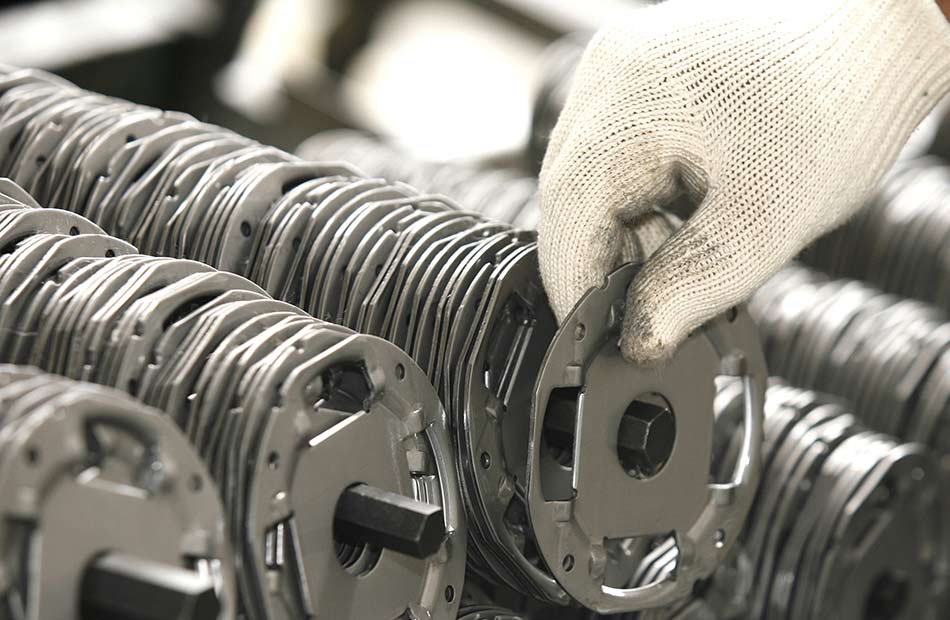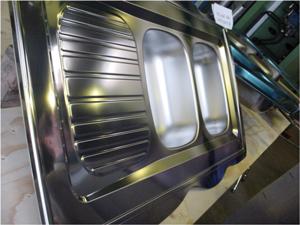The Evolution of Steel Stamping Procedures: Advancements and Applications
The realm of steel stamping procedures has observed a transformative journey noted by continuous innovation and adjustment to meet the needs of modern commercial practices. From the traditional methods deeply rooted in background to the cutting-edge innovations driving high-speed precision, the development of steel stamping has actually been nothing brief of remarkable. As new tooling strategies and automation find their method into this market, the effects for effectiveness and top quality are profound. The applications cover throughout a spectrum of markets, each profiting uniquely from the developments in steel stamping processes.
Traditional Metal Stamping Methods
Typical steel stamping techniques have long been the foundation of producing procedures in numerous sectors as a result of their efficiency and precision. The process includes developing a steel sheet or coil right into a wanted shape by pressing it between a die and a punch. This technique is commonly utilized for creating big amounts of get rid of high accuracy at a fast speed.
One of the essential advantages of standard metal stamping techniques is the ability to maintain tight resistances, ensuring that each component fulfills the called for requirements constantly. This degree of precision is vital in markets such as automobile, aerospace, and electronics, where also small variances can cause considerable issues.
Moreover, traditional steel marking methods offer cost-effective remedies for mass manufacturing compared to other making techniques. The capability to stamp components in quick succession decreases manufacturing time and decreases labor costs, making it an eye-catching choice for businesses looking to enhance their manufacturing procedures.
Introduction of High-Speed Stamping

Among the essential benefits of high-speed stamping is its capability to maintain precision and uniformity even at sped up handling speeds. This accuracy is crucial in markets where limited tolerances and complex layouts are required. Furthermore, high-speed marking permits the handling of a large range of products, consisting of aluminum, stainless steel, and copper, additional site link increasing its applicability across different markets.
Moreover, the appearance of high-speed stamping has allowed makers to fulfill the growing demand for complicated elements in sectors such as automotive, aerospace, and electronics (Metal Stamping). By leveraging the speed and accuracy of high-speed marking modern technology, firms can enhance their competitiveness in a rapidly developing market landscape
Improvements in Tooling Modern Technology
With the evolution of high-speed stamping enabling enhanced precision and efficiency in metal developing processes, the field of steel marking has actually seen significant advancements in tooling technology. Tooling technology plays an important function in metal stamping operations, influencing factors such as item top quality, manufacturing rate, and general cost-effectiveness. One crucial improvement in tooling innovation is the advancement of intelligent tooling systems that incorporate sensors and monitoring devices to give real-time information on the marking process. These systems can spot issues such as device wear or imbalance, permitting instant adjustments to keep optimum performance.
By using these innovative products, tooling manufacturers can produce dies and mold and mildews that hold up against the high stress and temperatures involved in metal stamping procedures, resulting in longer device life and better manufacturing efficiency. Overall, these developments in tooling innovation have actually changed the steel marking sector, permitting manufacturers to achieve higher levels of precision, productivity, and cost savings.
Integration of Automation in Stamping
As automation remains to reshape the landscape of metal marking procedures, the assimilation of automated systems has actually come to be progressively common in contemporary manufacturing facilities. Automated systems site offer numerous benefits in steel marking, consisting of enhanced effectiveness, improved accuracy, and boosted safety and security. By integrating automation into stamping procedures, suppliers can minimize cycle times, lessen material waste, and optimize manufacturing throughput.
Among the crucial components of automation in marking is the use of robot arms for tasks such as product handling, component manipulation, and top quality evaluation (Metal Stamping). These robot click for info systems can do repetitive and labor-intensive jobs with speed and accuracy, freeing up human drivers to concentrate on more complex procedures. Furthermore, automation permits real-time tracking and adjustment of marking procedures, causing higher general procedure control and quality control
Additionally, the assimilation of automation in stamping allows manufacturers to accomplish regular part top quality, meet tight resistances, and enhance general performance. As technology remains to breakthrough, the role of automation in steel marking processes is expected to broaden further, driving development and performance in the manufacturing industry.
Applications Across Diverse Industries
Integrating metal marking procedures across varied markets showcases the flexibility and adaptability of this production technique. Additionally, the home appliance industry advantages from metal marking procedures to manufacture components for fridges, cleaning devices, and various other family appliances. The flexibility of metal stamping procedures makes it an important production method throughout different sectors, showing its significance in modern-day production procedures.
Final Thought
